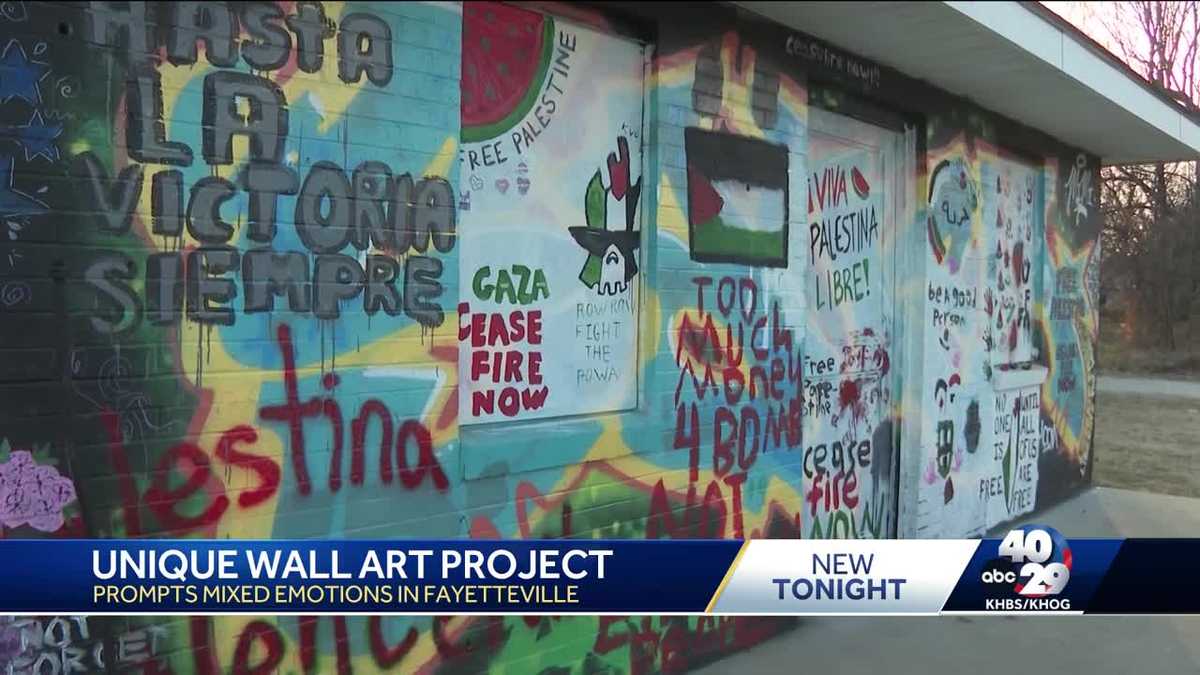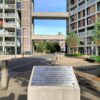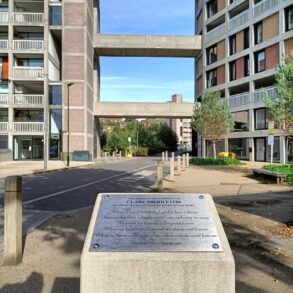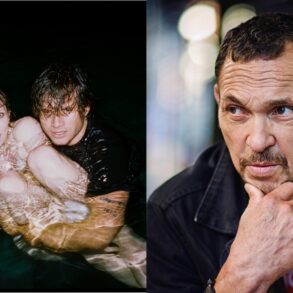
The city of Fayetteville is home to a first-of-its-kind community art wall in the state of Arkansas. A viewer reached out to 40/29 News to say he is offended by a painting on the community art wall in Fayetteville, which reads “Free Palestine.” The viewer did not wish to be interviewed, but we took his concerns to the city. While officials couldn’t discuss the painting specifically, they did address what is expected of those who decide to paint on the public wall. Fayetteville resident Carole Schuster and her son say they make it a point to walk by the community art wall. It’s located near the corner of Poplar Street and Chestnut Avenue, along the Razorback Greenway. “We have walked this neighborhood for years and years and years and always thought this was an eyesore,” Schuster said. “And now it’s fun.”Guidelines are posted in front of the art wall, urging people to be thoughtful and respectful as they paint. At the same time, whatever ends up on the wall usually isn’t there for very long. The city says the average painting stays up for about seven days. “This is just the beginning, right,” city of Fayetteville arts and culture director Joanna Sheehan Bell said. “We’ve only had the community art wall for about 3 months. And so every quarter, we sort of have a moment planned where we are sort of going to paint the entire building and start fresh.”The city’s arts and culture director says it’s also important to point out why the community art wall is in place to start with. “One of the things that’s really challenging for artists in a city like ours is that they have opportunities to do murals, but they don’t necessarily have space to build a portfolio,” Sheehan Bell said.The community art wall serves as an opportunity to teach and train local artists how to paint in a large-format way. “Be honest with you, this neighborhood has had all kinds of graffiti issues all over the place,” Schuster said. “And I, I don’t know. To me, it comes and it goes. I know it’s not permanent, so it doesn’t bother me.”Those who choose to paint are asked to be thoughtful when painting over the artwork of others. If a particular painting is large and appears to have taken a while to complete, consider painting on another portion of the wall.
The city of Fayetteville is home to a first-of-its-kind community art wall in the state of Arkansas.
A viewer reached out to 40/29 News to say he is offended by a painting on the community art wall in Fayetteville, which reads “Free Palestine.” The viewer did not wish to be interviewed, but we took his concerns to the city. While officials couldn’t discuss the painting specifically, they did address what is expected of those who decide to paint on the public wall.
Advertisement
Fayetteville resident Carole Schuster and her son say they make it a point to walk by the community art wall. It’s located near the corner of Poplar Street and Chestnut Avenue, along the Razorback Greenway.
“We have walked this neighborhood for years and years and years and always thought this was an eyesore,” Schuster said. “And now it’s fun.”
Guidelines are posted in front of the art wall, urging people to be thoughtful and respectful as they paint. At the same time, whatever ends up on the wall usually isn’t there for very long. The city says the average painting stays up for about seven days.
“This is just the beginning, right,” city of Fayetteville arts and culture director Joanna Sheehan Bell said. “We’ve only had the community art wall for about 3 months. And so every quarter, we sort of have a moment planned where we are sort of going to paint the entire building and start fresh.”
The city’s arts and culture director says it’s also important to point out why the community art wall is in place to start with.
“One of the things that’s really challenging for artists in a city like ours is that they have opportunities to do murals, but they don’t necessarily have space to build a portfolio,” Sheehan Bell said.
The community art wall serves as an opportunity to teach and train local artists how to paint in a large-format way.
“Be honest with you, this neighborhood has had all kinds of graffiti issues all over the place,” Schuster said. “And I, I don’t know. To me, it comes and it goes. I know it’s not permanent, so it doesn’t bother me.”
Those who choose to paint are asked to be thoughtful when painting over the artwork of others. If a particular painting is large and appears to have taken a while to complete, consider painting on another portion of the wall.
This post was originally published on this site be sure to check out more of their content.









